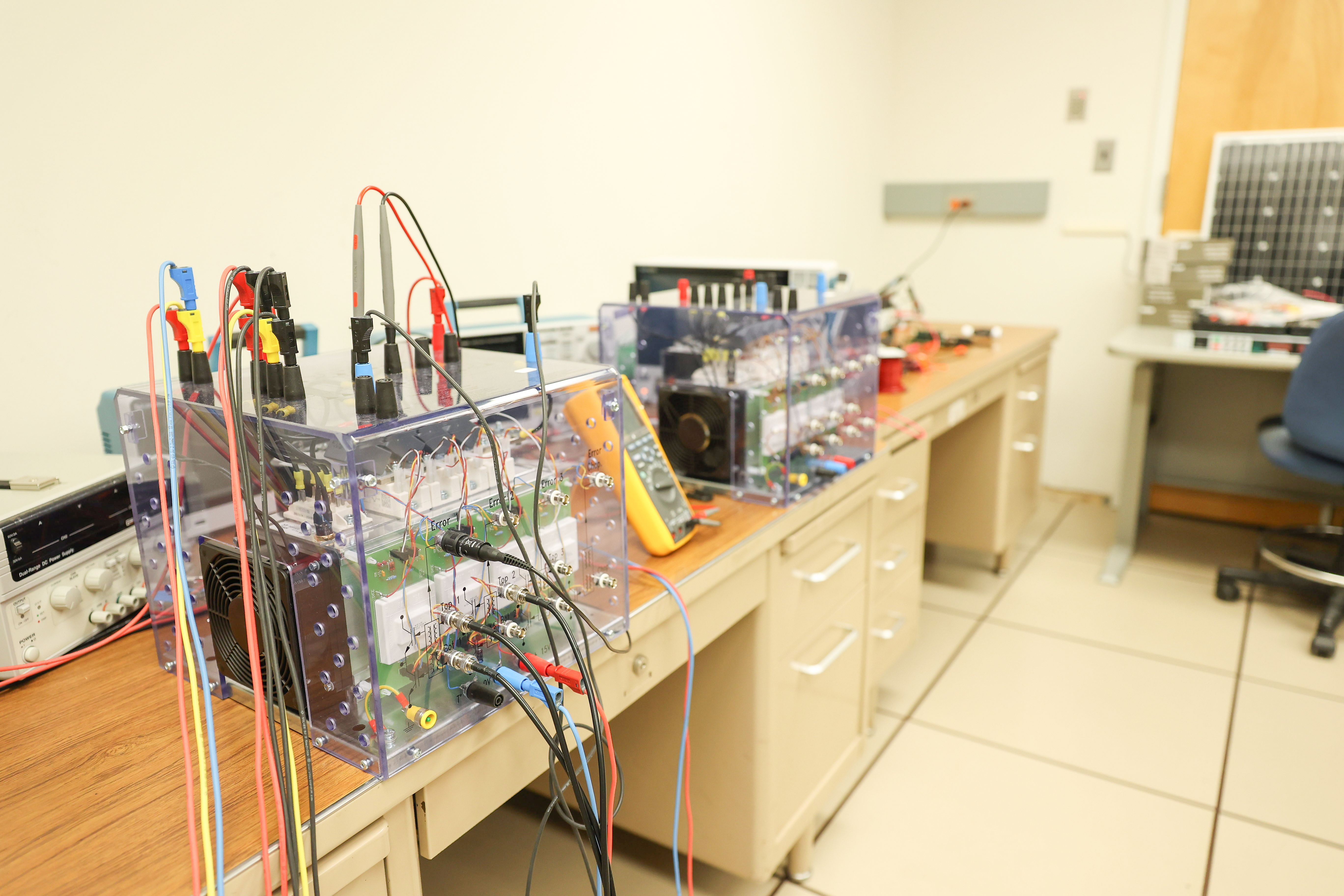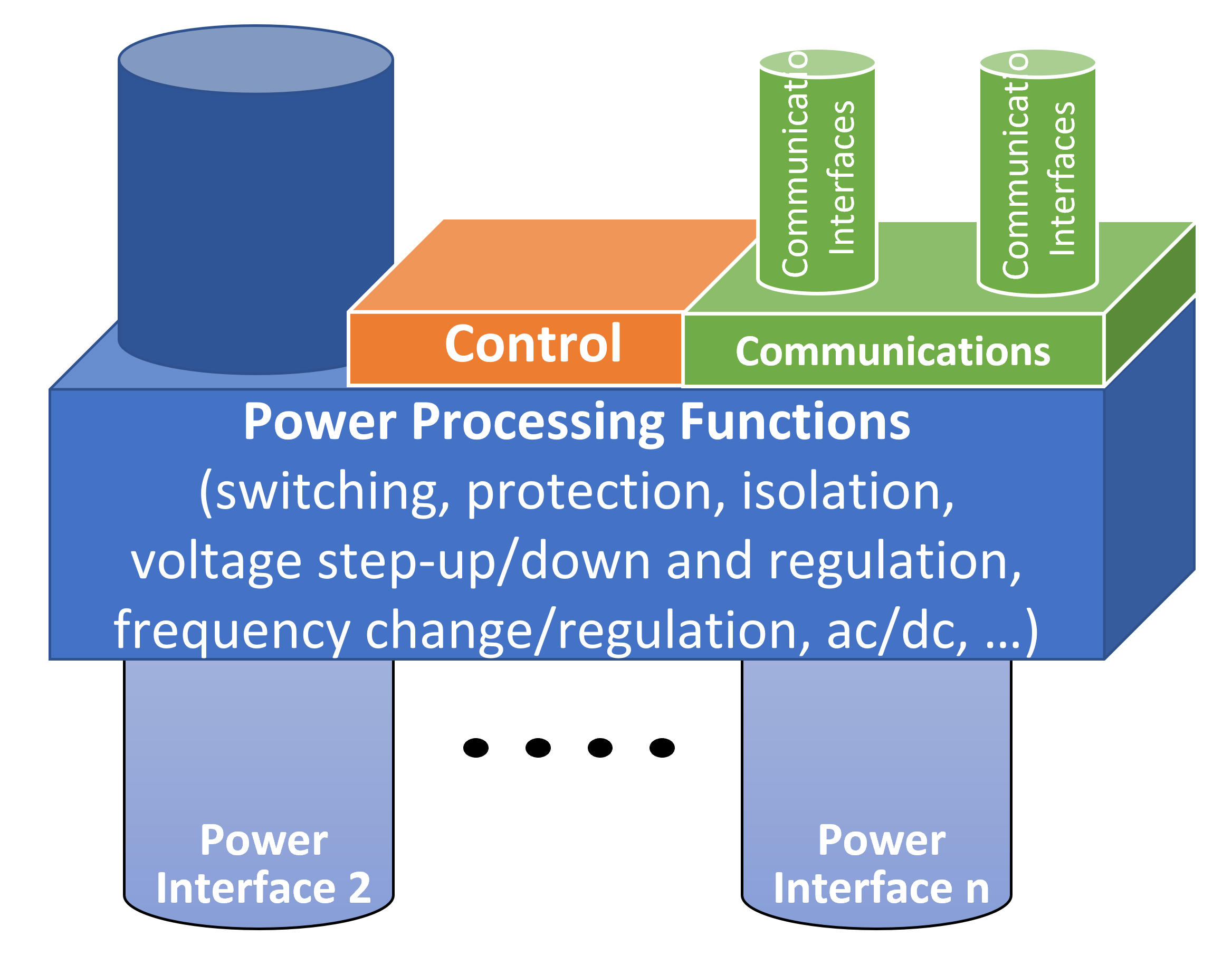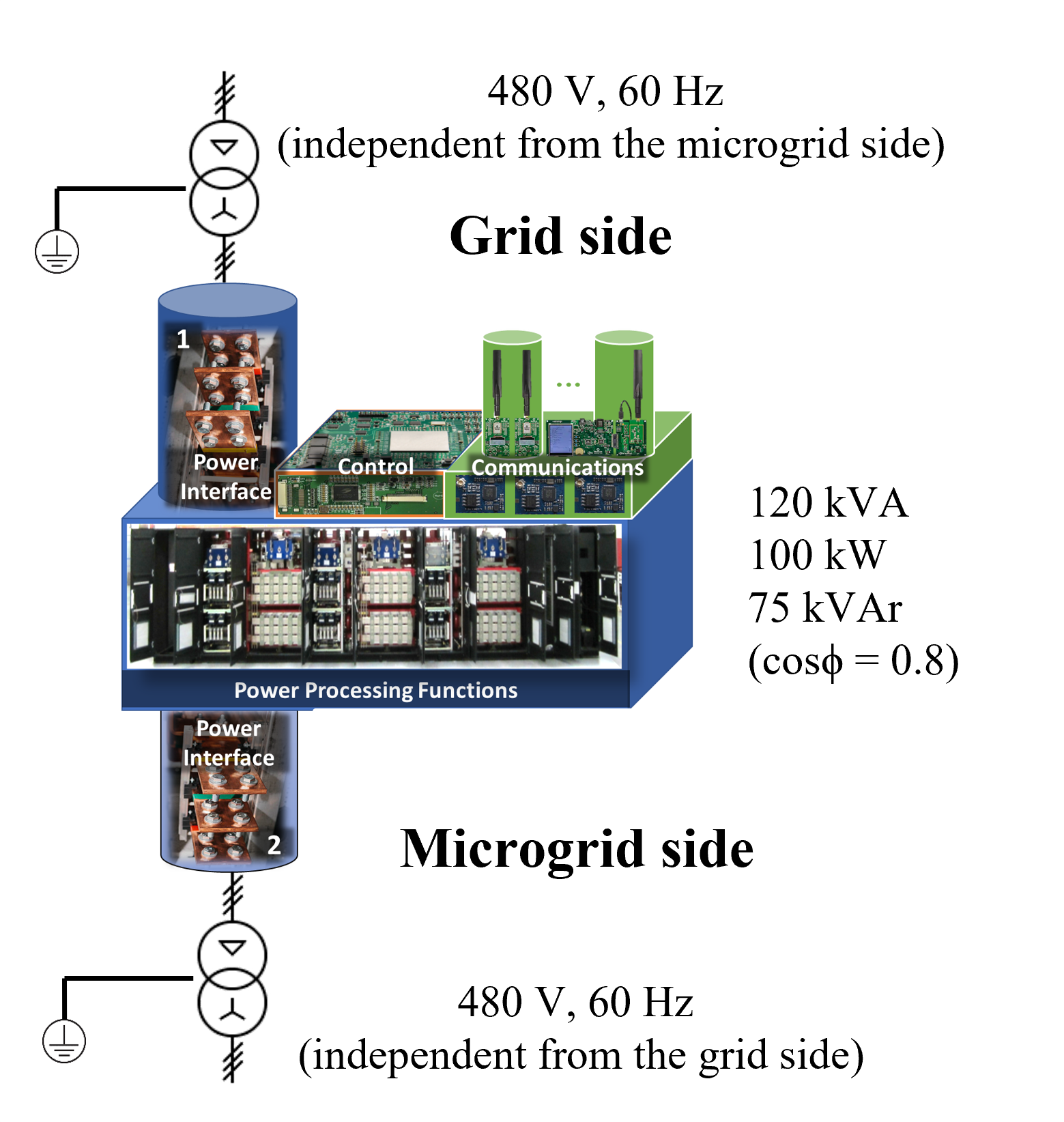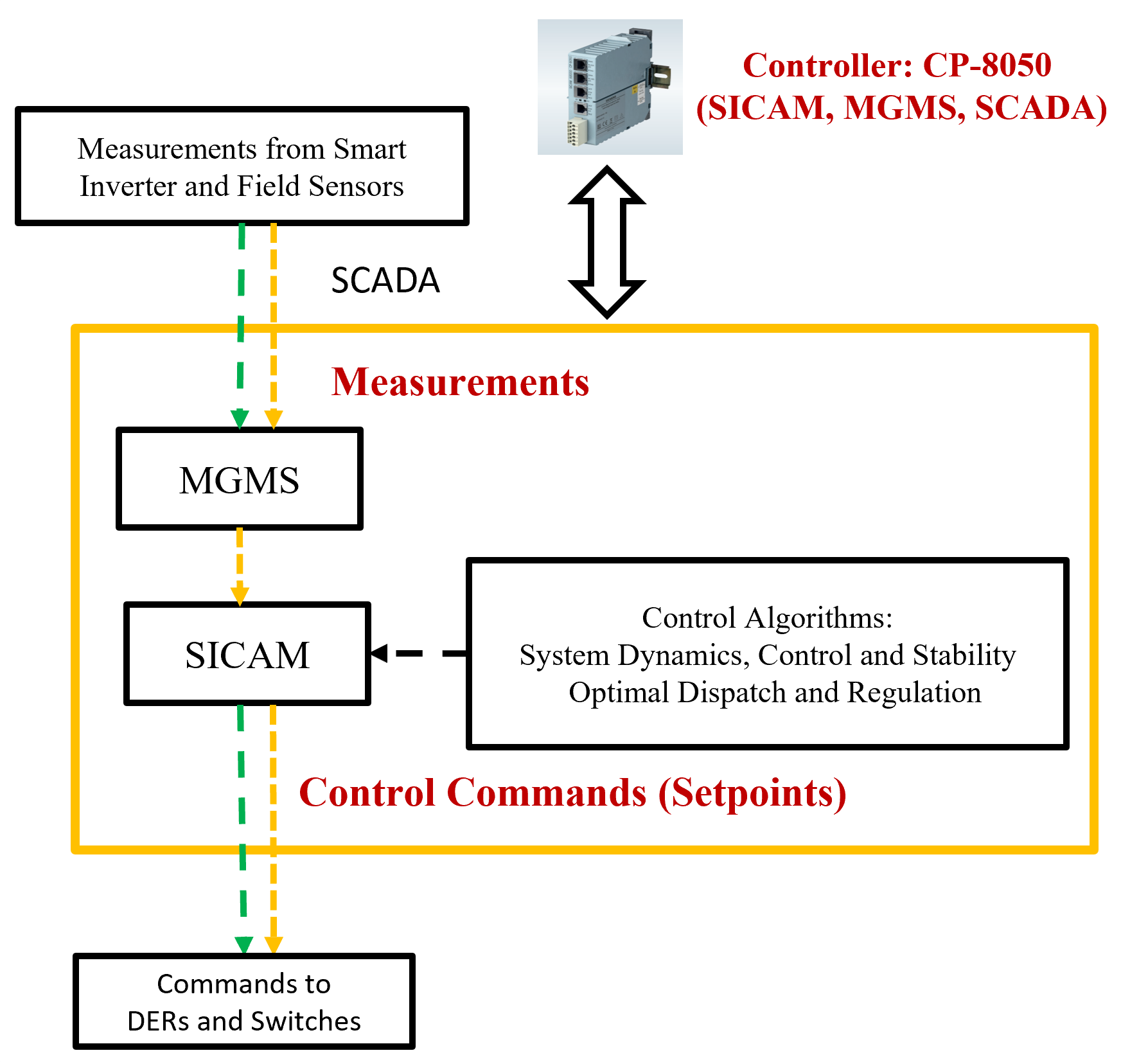Power and Energy Center

Power engineering research involves delivering electricity and converting it for use at its final destinations. Power systems in many industrialized countries rely on decades-old equipment, creating unique challenges in blending state-of-the-art technology with working equipment that can be half a century old.
At Virginia Tech, researchers work to design, improve, and protect the world's power grids and equipment; understand and design distributed and alternative power systems; store electricity for later use; and develop equipment that increases function with less energy.
Associated Faculty
Enabling a Decarbonized, Equitable Grid with Microgrid Building Blocks (MBB)

Lead PI
Chen-Ching Liu, VT
Co-Leads
Kevin Schneider, PNNL
Madhu Sudhan Chinthavali, ORNL
Rob Hovsapian, NREL
Advisor
Lisa Qi, ABB
Virginia Tech Faculty
Dushan Boroyevich
Richard Zhang
Virginia Tech Students
Akshay Kumar Jain
Haris Bin Ashraf
Lung-An (Vic) Lee
PNNL
Alok Kumar Bharati
Francis Tuffner
Wei Du
Samrat Acharya
ORNL
Misael Martinez Montejano
Joao Pereira Pinto
NREL
Sayonsom Chanda
Manish Mohanpurkar
(1) Modular/standard design of MBB to reduce cost and time of microgrid deployment
(2) Development of a scalable MBB prototype for a wide range of microgrids
(3) Modular and standard interfaces between MBB and utility systems as well as generation, load, and controls
(4) Low-cost standard approach to affordability for widespread equitable deployment of microgrids.
Technical Scope
- MBB Design and Prototype Development
- Modeling and Simulation of MBB, Performance Requirements and Evaluation
- MBB Modularization, Standardization, Validation and Testing
- MBB Demonstration
- Planning of technology transfer and commercialization
Funding Summary ($3.4M)
| FY22 authorized |
FY23 requested |
FY25 requested |
| $1.15 M | $1.15 M | $1.1M |
- Project Duration Mar 31, 2022 - Mar 31, 2025
- Lead: Virginia Tech (VT)
- Partners: PNNL, ORNL, NREL
- Advisor: ABB

Functional Requirements:
- Design for Multi-MW MBB (by simulation)
- Scaled-down 100 kW prototype development
- Bidirectional power flow
- Decoupled input-output side/control

Functional Requirements:
- Dynamics and control related with DER synchronization, load restoration and system stability
- Optimal dispatch to manage load generation balance and minimize curtailment
- Restoration planning using system topology and situational awareness to pick up critical loads and maximize restoration duration
- Regulation and dispatch as a MGC – serves critical load as a priority
- Faults and other disturbances – For example, 3-phase fault at generator busbar

Functional Requirements:
- Data/measurements acquired from field devices (DERs, Loads, switches, etc.) Must be transmitted securely to the microgrid controller, and control commands should be delivered securely to field devices.
- Low communication latency to maintain microgrid stability
- Communication protocol to be decided based on discussions with PNNL, ORNL, and NREL
- Data acquisition and remote control
- (G1) In the environment with high penetration of renewables and storage, a common scenario is that generation and load resources are widely available. MBBs provide integrated microgrid capabilities, including power conversion, communication, and control, to facilitate widespread deployment of microgrids and enhance resilience.
- (G2) MBB is to facilitate standard/modular design of microgrids and be able to address different levels of capability microgrids will need to perform. The proposed MBB will be customer-focused, i.e., MBBs will be designed to handle a wide range of needs ranging from simple microgrids that are just solar and energy storage to fully capable microgrids with the ability to manage different levels of DERs.
- (G3) MBB will enable the deployment of modular microgrids that can be tailored for specific communities and operational needs. This includes enabling the deployment of zero emission microgrids as well as microgrids that address the specific needs of rural communities.
- (G4) MBB is a critical technology to meet the goals of DOE Microgrid program, including (1) Microgrids act as a point of aggregation for DERs, and (2) Decrease microgrid capital costs while reducing project development, construction, and commissioning times.
- The MBB goals lead to these features:
- (A1) MBBs integrate microgrid capabilities, power conversion, control, and communications, as a systemwide controller with advanced control and operation capabilities.
- (A2) MBB is an enabler for microgrids to serve as an aggregation point for DERs with microgrid system operator functionalities.
- (A3) Based on the building block concept, MBB has the modularity to meet the needs of microgrids with different levels of capabilities.
- (A4) MBB has the flexibility to meet different levels of affordability, including the specific needs for rural communities.
- (A5) MBB reduces the cost of development and deployment of microgrids; an essential feature of modularized design of the MBB is to avoid costly customized engineering for each new microgrid.
- (A6) MBB has the dynamic decoupling capability between the microgrid with the utility grid.
- (UC1) Grid connected mode: MBB controls the power flow and participate in electric energy trading and ancillary service activities (e.g., voltage control in a distribution system) through the hosting distribution system (A1, A2, A6), (A5: MBB helps generate new revenues)
- (UC2) Resiliency (islanded) mode: MBB with high level DERs sustains critical load and maintains system stability under extreme conditions. MBB coordinates grid forming capabilities for the entire microgrid. (A1-A2)
- (UC3) Supporting system restoration: MBB provides blackstart power from the microgrid to the bulk system. (A1-A2) (A5, blackstart as an ancillary service – a new source of revenue)


